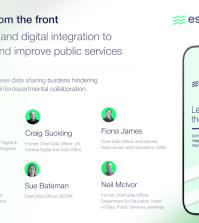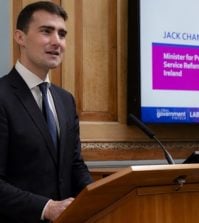Peter Ong, Head of Civil Service, Permanent Secretary, Ministry of Finance and Permanent Secretary (Special Duties), Prime Minister’s Office, Singapore: Exclusive interview

Singapore is regarded as an economic success story. Peter Ong, Singapore’s head of civil service and permanent secretary of its finance ministry, explains how a continuous drive to plan ahead and adapt to a changing environment has shaped its government of today
Just as Alexandra Canal turns into the Singapore River in the south of the island city-state, less than 5km stands in the way between the river and the sea. But after the river makes a southwards curve, it opens out into what is called the Marina Bay. Thanks to the Marina Barrage dam, the bay forms Singapore’s 15th fresh water reservoir, with its shores largely built on reclaimed land. Featuring gardens, luxury hotels, a new financial district and the famous Marina Bay Sands resort, Marina Bay has become a tourism hotspot.
However, three decades ago, the area was just part of the Singapore River. The bay’s development, Peter Ong, Singapore’s head of civil service and permanent secretary of its finance ministry, says, required “long-term planning, determination, and political will – to first see through the plans, and then to make adjustments along the way as our circumstances changed.”
Careful forward thinking, Ong adds, is part of the Singaporean mentality: “Deep within our DNA is a sense that the world doesn’t owe us a living, that we are a price taker, and if we don’t keep changing and transforming, we will be swept away by global forces.” Singapore is a small country but a very open economy, and so “we are always buffeted by storms that are not within our control,” he adds.
Such determination is what propelled Singapore from an impoverished swampy island with 1.6m inhabitants and virtually no natural resources into a wealthy global hub. Its late prime minister Lee Kuan Yew, who died in March this year, led Singapore towards rapid development following its independence from Malaysia in August 1965. Singapore today leads the global education leagues, has an unemployment rate of just 2%, and has one of the lowest crime levels in the world. Ong says the Singapore of today exists thanks to the planning, foresight, and vision of its forefathers. Their focus on long-term planning and the continuous drive towards a long-term vision still remain characteristics of Singapore’s governance going forward, he adds.

Peter Ong (left) shares his thoughts with Martti Hetemäki, permanent secretary of Finland’s Ministry of Finance (right), and heads of financial ministries from 12 further countries, at the Global Government Finance Summit 2015
Budgeting for no debt
A strong focus on forward-thinking is ingrained in the government’s structures through and through: by constitution, no administration is allowed to spend more than it raises in revenue during its term. This rule does restrict the flexibility of Treasury officials, including Ong’s. While adhering to it requires disciplined planning and a clear focus on value for money, Ong says that the rule has nevertheless been “a source of great advantage for Singapore as it is able to preserve inter-generational equity, and builds an endowment to meet the needs for both its current and future generations.” It also means that Singapore is one of a handful of countries in the world with no net debt.
It has also meant that Singapore recovered relatively quickly from the 2008 global financial crisis. “I remember in 2008, we weren’t sure how deep the abyss was going to be but we needed a major injection of hope and optimism into our economy,” Ong says, and adds that his government was able to be “very muscular” in its response to deal with the crisis.
In 2009, the government, after asking for the president’s approval to tap into its past accumulated reserves, launched a S$20.5bn (US$13.7bn) stimulus package with the main aim of saving jobs. A natural reaction to the crisis by businesses would be to lay off staff, but Ong explains that the government “felt that would not be the right thing to do because when the recovery comes, as it surely would, then you have to go back and hire and that’s not productive. And so we came in and subsidised wages for a short period of time.”
The government also intended to use the stimulus money to provide a guarantee for banks. While this was not used, Ong explains that “just the fact that we were prepared to back the banks, which were all very sound, gave confidence to the public, and our financial system stayed resilient through the crisis.” Within a year, Singapore emerged from its worst recession on record after the economy expanded at an annualised rate of 20.4% between April and June 2009. “We came out of the crisis very quickly,” Ong says, for the nation was “dealing with it from a position of strength.”
Planning for the long term
Many governments around the world operate annual budgeting processes, prompting calls for greater emphasis on medium and long-term planning. In the UK, for example, overall government priorities are set out in spending reviews, which are announced by the Treasury every two to three years. But departments have to set new budgets every year, unable to carry forward any savings made and with spending tightly controlled by the centre.
Singapore’s approach provides ministries with five-year block budgets, which come with “full flexibility,” Ong says. Ministries are free to decide on programmes they want to spend their money on, but have to adhere to centrally-set policies on matters such as promotion and pay. To ensure value for money, audits are carried out regularly by the Accountant General’s Department.
So who decides how much money each ministry gets? Some of them are tied to a percentage of GDP. Others are a set amount determined through negotiations between officials at the finance ministry and the department. Each government agency’s block budget is determined according to its own individual formula, with negotiations carried out at the civil service level.

Peter Ong welcome’s heads of civil service from eight countries to the Global Government Summit, held in Singapore last November
One government
However, not all additional revenue gained through a growing GDP is handed to departments. Some of this money is put into a central pool called the ‘Reinvestment Fund’ which is then used to fund new and innovative programmes following a competitive bidding process. “This allows us to channel our funds into new and emerging areas that were not contemplated when the block budgets were negotiated, and we can then build new capabilities to meet new challenges”, says Ong.
In order to avoid a government too fragmented due to departments’ autonomy, and to be able to respond to a more globalised and complex world, the Ministry of Finance, which determines the use of this central fund, favours programmes and policies that require departments to work across the whole of government. Ong says: “This is our way of saying: ‘The money will go to you from the Reinvestment Fund if you put up proposals and projects that require you to work together for joint outcomes’.”
Ong’s team puts out a call for policy and programme proposals twice a year and conducts a ranking process to decide who gets what. Allocating some funds in this way, Ong says, boosts the concept of operating as one government, rather than simply as individual agencies.
A second method the government uses to break down departmental barriers is setting and assessing whole-of-government outcomes: The finance ministry biennially coordinates the Singapore Public Sector Outcomes Review (SPOR), which provides a report on the strategies, programmes and resources that are employed by all public agencies to achieve these outcomes.
Responding to change
Another example of Singapore responding to a changing world is in the way it has transformed and modernised its public services. Since launching its e-Government Action Plans in 2000, Singapore has aimed to advance its digital public service delivery. Today, Singapore has one of the highest e-services adoption rates among public services around the world.
One example is the application process for trade permits. Previously, Singaporeans would have to fill in up to 30 documents and wait seven working days to obtain the permit. But today, the whole process takes ten minutes and involves just one document. “We work hard at making Singapore an easy place to do business,” Ong says.
Other improved services include the system for filing tax returns: “If you simply have salaried income, we electronically link your employer records to the Inland Revenue Authority of Singapore, and you don’t have to do any filing come April 15 every year.” Currently, three in five, or 1.31m Singaporeans benefit from this automatic computation of their taxes and only need to take action if they disagree or have any additional information to add to their returns. “Our mantra,” Ong says, “is: ‘No need for service is the best form of service’.”
Among all this digitisation, Ong is keen to add that the government has not forgotten about those citizens who are not technologically savvy enough to access services online or on smartphones. “This is why we have more than 20 Citizen Connect Centres around the island. So if you need a service staff to help you, you can get assistance.”
Engaging with citizens
Singapore’s move towards a fully digital public service happened alongside a trend to engage more with citizens. “Singaporeans”, Ong says, “have started to want to have a bigger say in the policies that affect their lives.” The government responded by “trying to get the whole system to involve the public a lot more in the design and implementation of policies across the full range.” This, he says, has been a great challenge, but adds that “we have met with considerable success even though we have work left to do.”
In 2012, as part of its efforts to engage Singaporeans more, the government launched what it called ‘Our Singapore Conversation’, which involved more than 47,000 citizens participating in some 660 dialogue sessions across the island. This year-long consultation exercise sought to establish what direction citizens would like Singapore to go over the next 20 years. As a result, the government announced in 2013 that it would put more emphasis on inclusive growth; improve social safety nets and, Ong adds, “keep our system open and mobile so that those who are able and work hard will do well.”
The Singaporean government improved care for its elderly citizens, who are referred to as ‘pioneers’ – “those who have been with us since the early years of our independence”– and last year launched its ‘Pioneer Generation Package’, which helps the Pioneers with their healthcare costs for life.
However, Ong explains that many elderly residents may not be aware of the changes, which is why the government got a group of volunteers together – ordinary citizens – to “go out knocking on doors and explain this package” to the pioneers. Ong says that these volunteers, or “Pioneer Generation Ambassadors, help us with what we call the last mile of our citizen engagement.”
The ambassadors visit elderly people’s homes and explain the intricacies of the new policies after undergoing some training by the government. Apart from sharing information on the Pioneer Generation Package with elderly residents, the ambassadors also provide the government with feedback which it then uses to improve policies along the way. Some of these volunteers are seniors themselves, but overall the volunteers come from all walks of life. Why do they do it? “They know that with every home they visit, they are bringing comfort and assurance to another fellow Singaporean who has contributed to what Singapore is today,” Ong says. “I think that in itself is reward enough.”
Singapore has come a long way over the last 50 years. And, as past history suggests: the nation will keep transforming to, in Ong’s words, keep building a “public service that seeks to work as one, anchored on our core values of integrity, service, excellence, and puts citizens at the centre of everything we do.”





















